.png?width=260&height=288&name=B%20Film%20Strip%20Graphic%20(2).png)
COME FOR THE insights, STAY FOR THE ROI.
As pioneers of the product placement industry, we know the future of brand marketing is inside the entertainment.
And as eMarketer readers, we know you're on the lookout for industry trends and insights to excel in your role.
Good thing the universe brought us together.
Sign up for the monthly edition of 'Thelab' for news, trends, and more on entertainment marketing. You can thank us later.
INSIGHTS STRAIGHT TO YOUR INBOX
WHAT IS PRODUCT PLACEMENT?
Product placement, also known as brand integration or product integration, is an entertainment marketing strategy where brands are incorporated within films, television shows, music videos, or other entertainment content in order to reach consumers. With ad avoidance at an all-time high, brands are using product placement to reach and engage key audiences for impactful results.
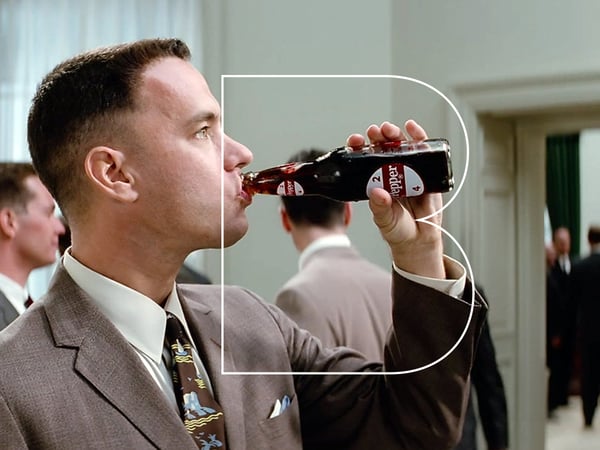
Dr. Pepper in Forrest Gump
As much as it is a science, product placement is also an art. Product placement only works if brands are incorporated authentically into the content, empowering the storyline and not disrupting it. To do this, brands are aligned with different story and character elements. Brands can align with distinct characters such as Ray-Bans on Tom Cruise in Top Gun or the Chevy Camaro as Bumblebee in Transformers. Brands can operate as sets or locations such as The Gap in Stranger Things or Dunkin’ in Patriots Day. Most commonly they act as natural props that ground the story in reality, like Xbox in Big Bang Theory or Reeses Pieces in ET.
WHY ARE BRANDS LEANING MORE INTO PRODUCT PLACEMENT?
Getting inside the content – rather than interrupting it – has some important benefits: higher engagement rates, no skipping or ad-blocking, built in distribution, compounding impressions as content moves across platforms, and the ability to grow brand perception through contextual and character alignments.
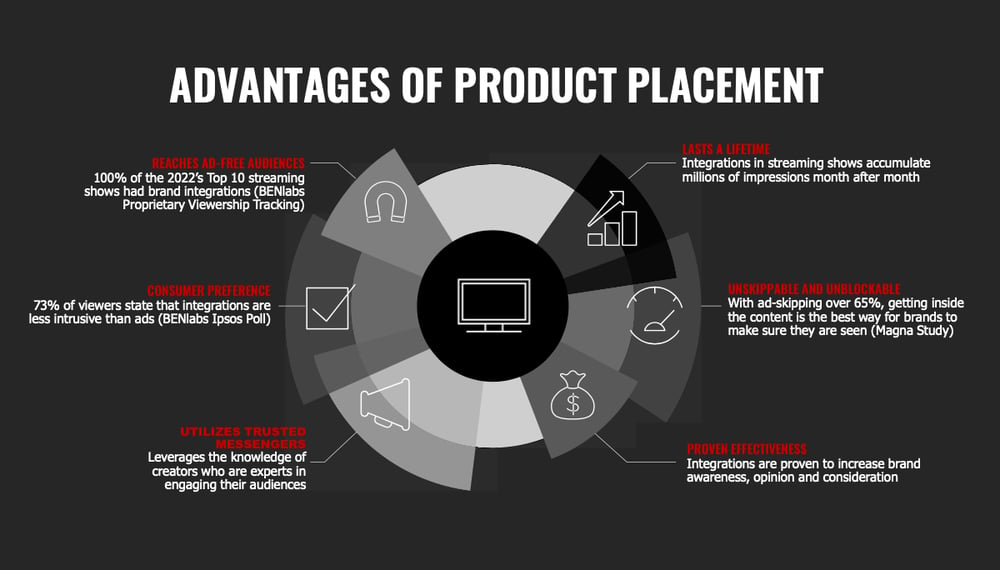
Viewers also prefer integrations over ads. A BENlabs Ipsos poll revealed that 73% of viewers found integrations less intrusive than ads. The combination of ad avoidance and ad annoyance has made product placement a critical staple in the marketing toolkit.
HOW CAN BRANDS LEAN INTO ENTERTAINMENT?
Implementing a product placement campaign into a brand’s overall marketing strategy allows the brand to lean into entertainment properties through authentic and creative entertainment solutions. Brands can reach their audience(s) through music video alignments, watercooler content, blockbuster theatrical releases, and more. With more content than ever before—and ad avoidance at an all time high—product placement is a safe haven for brands that are ready to embrace creativity from the entertainment community and demand for authenticity from audiences.
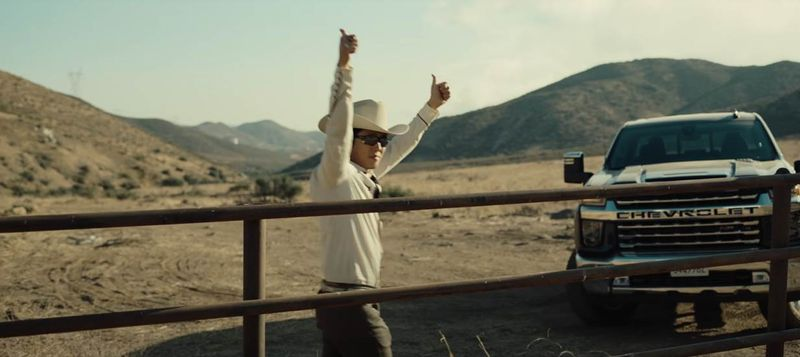
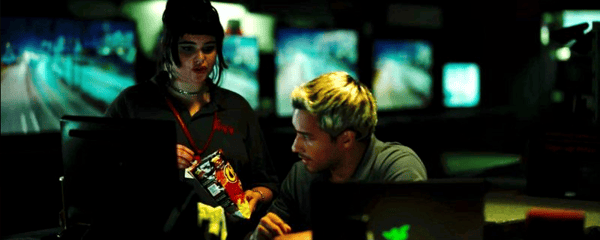
There are many ways for brands to lean into these entertainment properties. The easiest: situational alignment that grounds a storyline into reality. A character’s development can be attributed to something as simple as what handbag they regularly wear, what car they drive, or even what snack they prefer. Brands can leverage entertainment by establishing brand situational salience across content verticals.
HOW THE ENTERTAINMENT INDUSTRY COLLABORATES WITH BRANDS

Product placement offers creators of all levels additional dollars and products to help their productions bring the best entertainment to the screen. Beyond the monetary benefits, product placement is an essential part of developing believable worlds that audiences can relate to. Whether they are a prop master, set designer, transportation coordinator or a producer, productions prefer to ground their worlds with objects and settings familiar to audiences.
NEW TECHNOLOGY DRIVING THE PRODUCT PLACEMENT INDUSTRY FORWARD
The sheer volume of content has made it nearly impossible for humans to interpret and scan all product placement opportunities. The average American is streaming 8 hours of content daily with total content spend across networks surpassing $121 billion according to Variety.
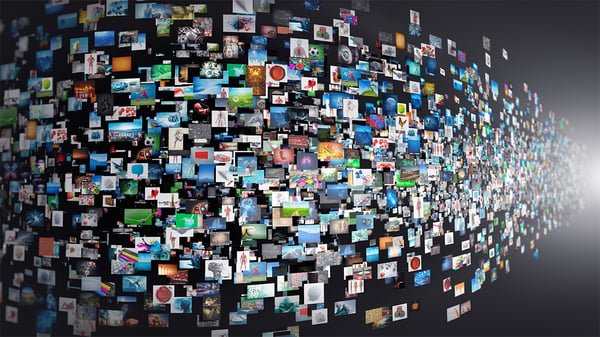
This has led to the emergence of artificial intelligence—and more specifically deep learning—as the fundamental technology poised to transform the industry as a whole. This type of A.I. solves two core challenges when it comes to the product placement field.
FIRST CHALLENGE OUR A.I. SOLVES:
Brands rely on their placements to perform and reach audiences, but entertainment viewership—especially new programs—is hard to predict. BENlabs uses A.I. to understand which content will bring in viewership and what the best opportunities are for brands. In our most recent test, our A.I. predicted 5/5 of the top performing broadcast shows, compared to 3/7 for Adweek and 1/5 for TV Guide.
SECOND CHALLENGE OUR A.I. SOLVES:
Scanning and filtering opportunities for thousands of hours of entertainment content each year is a time-consuming process. By combining A.I. and human expertise, technology can narrow the field to promising opportunities that human experts can then review. This increases productivity and provides product placement on a massive scale that was previously impossible.
PRODUCT PLACEMENT TODAY
Product placement continues to grow as a supporting financial resource for producers everywhere to fund their creativity and build familiar realities for audiences. From its humble beginnings funding soap operas in the 1930s, to the billion dollar industry it is today, product placement has become a pivotal strategy for brand marketers to effectively reach audiences where they are.
The cultural relevance and cache that product pavement delivers for brands remains the biggest driver for the industry. The emergence of ad-blocking technology and consumer ad avoidance has certified product placement’s growth as an essential marketing strategy for the modern and legacy marketer. As industry trends rapidly progress, transformative A.I. technology creates improvements to filter, identify and surface new opportunities for brands.